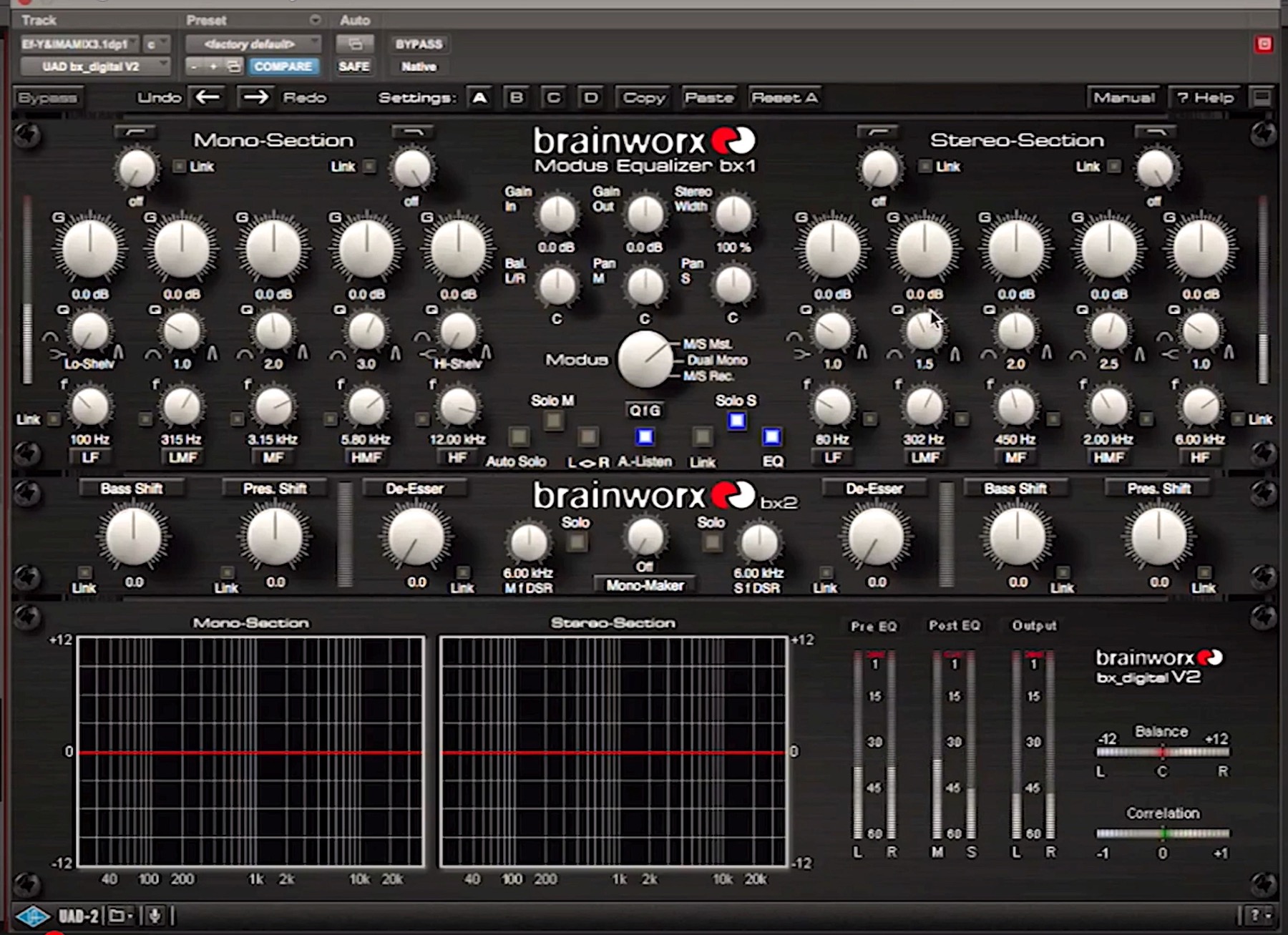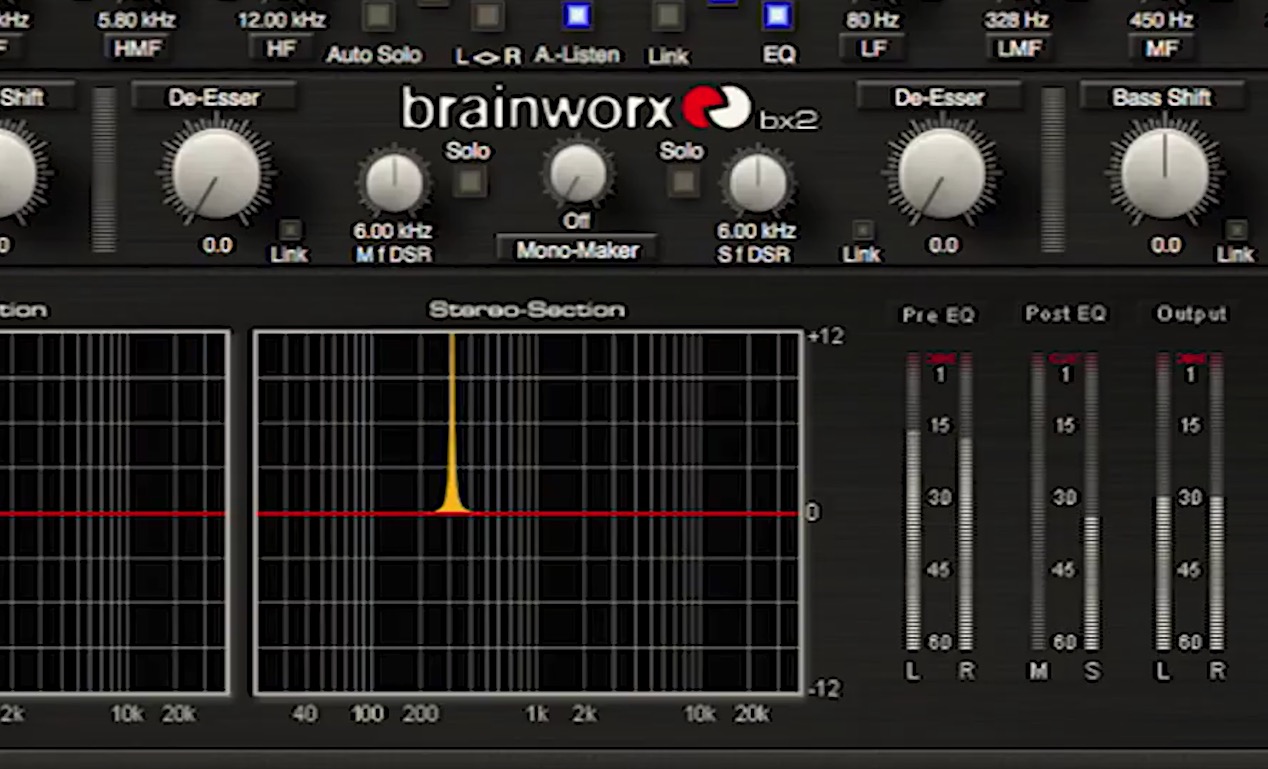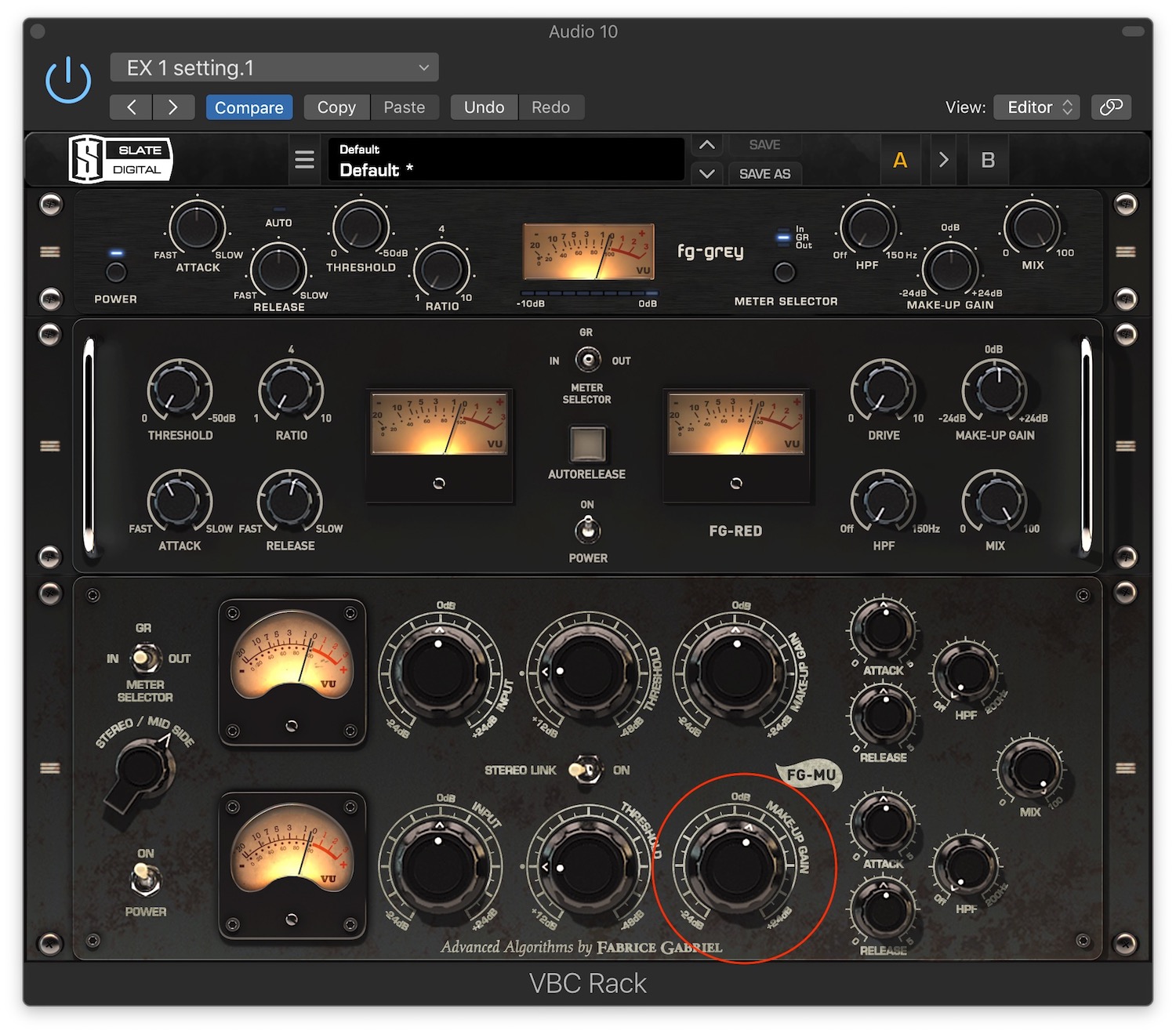Understanding Mid-Side Mastering
When it comes to mastering, subtlety is the name of the game. You'll see this demonstrated in this excerpt from the video "Mastering Case Study with Fab Dupont," in which he’s working on the song "You and I" by Effee.
What M/S Processing Does
The excerpt starts with Fab using a Brainworx BX Digital V2 mastering equalizer plug-in in mid-side (M/S) mode, to do some processing on just the side channel.
Mid vs. Side Content Explained
For those unfamiliar with how M/S processing works, it allows you to separately address the mid and side content of a stereo image. The mid is the sum of the left and right channels (the same as summing it to mono); and the side content is the left minus the right, and is the equivalent of taking a stereo channel and flipping the phase on one side.
From a more practical standpoint, the mid content is mostly what's up the middle of the mix, such as kick, snare, and lead vocals. The side content consists mainly of audio from the outer portion of the stereo image. Being able to address the content via M/S processing allows the mastering engineer to literally tinker around the edges or process the center.
Cleaning Up the Side Channel
The first thing Fab does is to solo the side content, after which says he can hear the frequencies bunching up in the lower mids—in other words, they sound a little bit cluttered.
Detecting Low-Mid Buildup
He says he also notices a bit of distortion. He sweeps the frequencies until he finds the area he wants to cut, 302 Hz. He makes a small cut, -1.4 dB, with the Q (bandwidth) set at 1.3, which he adjusts by ear as the song plays.

For this song, Fab is using the Brainworx BX Digital V2 as his mastering equalizer, utilizing its M/S mode and its ability to solo the mid or side band.
Addressing Resonances with Narrow Cuts
Next, he hears a resonance peak, and he once again sweeps the frequencies using the HMF (High-Mid Frequency) band to find it. He sets the equalizer frequency to 1.86 kHz, with a relatively narrow Q of 2.3 and a cut of -2.3 dB. Having the higher Q (which means a more narrow bandwidth) makes sense for dealing with that peak because it's a relatively narrow frequency range he's cutting.

Fab sweeps the frequencies as the song plays to find the peak he's looking to eliminate.
Fab then turns off side-solo mode plays back the full mix with the adjustments he just made, and then compares it to the same section with the EQ bypassed. He observes that the subtle cuts he made have added to the clarity and removed the peak.
Refining the Mid Channel
The next task he takes on is to address the sound of the synth pickup leading into the chorus. For that, he solos the mid portion and listens to the part. The synth is basically in the clear (by itself) during the short pickup riff.
Using Sweeps to Locate Problems
He says he hears some bunching around 120 to 130 Hz, and uses the same workflow as before, sweeping the frequencies (with a sizable narrow boost) to find the problematic area.
Subtle Mid-Band Adjustments
He sets a cut in the LMF (low-mid frequency) band at 134 Hz of -1.7 dB with a relatively wide Q of 1.3. He then takes the plug-in out of mid-solo mode and plays that section with all the frequencies in.
Evaluating the Results
Finally, he compares the processed version with the raw mix. He says his various cuts helped the mix speak better and made it less muddy.
Notice that nothing he did was too severe, it was all pretty subtle. That's par for the course in mastering, where if you use too heavy a hand to fix one problem, you're liable to create another.
Creative Applications of M/S Processing
A lot of imaging plug-ins use mid-side technology. You can create similar effects yourself using a mid-side EQ or dynamics plug-in. For instance, you can accentuate the outer edges of the stereo image, the side band, which can add to the apparent width.
The side content of a mix tends to be more high-end oriented, because instruments that live more in the upper-mids and high frequencies are more likely to be panned to the sides, whereas low-end elements (such as bass and kick) are almost always panned to the center. By boosting the highs or the level of just the side content you can make your mix sound wider.
Making Mixes Wider with Side Boosts
Example 1: Here's a rock track that has rhythm guitars panned left and right, so they're pretty heavily represented in the side content. The first four measures have a stereo instance of Slate Digital VBC (Virtual Buss Compressors) getting about -1 dB of gain reduction. Starting in measure 5, the VBC was set to M/S mode. Both bands are getting the same amount of compression, but the side band is also being boosted +3.5 dB at the output (via the Makeup Gain). Focus on the rhythm guitars when you listen, and notice how they seem to spread out when the side gain is boosted.

In Example 1, a wider image was obtained by boosting the side band at the output of this Slate Virtual Buss Compressors plug-in. The Makeup Gain, used for the boost, is highlighted.
If you're in a mastering situation and you discover a problematic level imbalance inside the stereo mix of a song, and it's not possible to get a revision from the artist, you can sometimes use M/S processing to zero in on the element you're trying to correct. For example, if the instrument in question is mostly on the sides, you could use an EQ or multiband compressor on that portion only, focused as closely as possible on the frequency range of what you're trying to affect. Conversely, you might be able to address one of the mid elements—maybe the kick drum or bass—without impacting the cymbals and other side elements.

Here are the settings for the two processors (Dynamics and EQ) from iZotope Ozone 8 that were used in Example 2.
Fixing Elements Inside a Stereo Mix
Example 2: This shows how you can isolate and process an instrument inside a mix using M/S. You'll hear a short passage that plays twice with a brief pause in the middle. The first time it's unprocessed, but the second time two different mid-side processes in iZotope Ozone 8 are employed to lower the level of the tambourine a little. Using the multiband Dynamics module, about -2 dB of gain reduction is applied to a frequency range of about 7 kHz and 14 kHz, corresponding to the high frequencies of the tambourine. In addition, an equalizer is set to cut -1.8 dB at 9.82 kHz with a Q setting of 1.4.